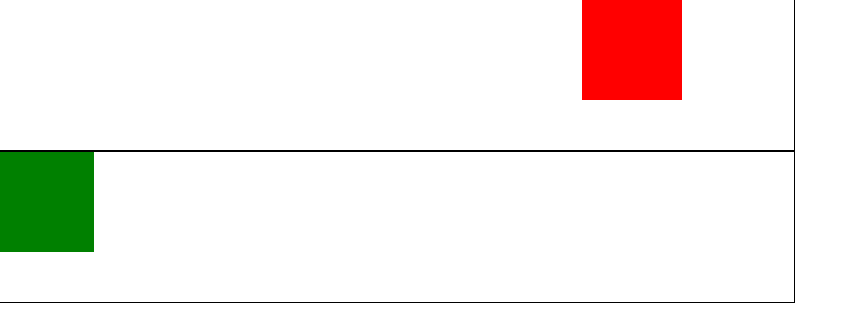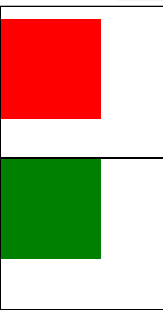链式运动:
所谓链式运动,也即元素的可运动属性一个接着一个的发生变化,有其一定的需求性。前面所学的缓动函数无法满足链式运动的需求,缓动函数的叠加与定时器分配(一个元素只有一个定时器)之间构成了矛盾,造成只有最后一个缓动函数有效的局面。
为了能够实现链式运动,需要重新封装缓动函数。整体的思路是,在缓动函数中加一个可选的函数参数,当传入该函数时,则在一个属性变化完成后调用。
这样之后,每个缓动函数后面都可以再跟一个缓动函数,类似于递归,直至不再传递缓动函数。
页面布局和样式部分:
<!DOCTYPE html> <html> <head> <title></title> <style type="text/css"> body{ margin: 0; padding: 0; } #box{ width: 100px; height: 100px; background-color: red; position: absolute; } #box2{ width: 100px; height: 100px; background-color: green; position: absolute; top: 0; } .aaa{ border: 1px solid black; width: 800px; height: 150px; position: relative; } .bbb{ border: 1px solid black; width: 800px; height: 150px; position: relative; } </style> </head> <body> <div class="aaa"> <div id="box"></div> </div> <div class="bbb"> <div id="box2"></div> </div> </body> </html>
js部分:
var aaa=document.querySelector(".aaa") var bbb=document.querySelector(".bbb") var obox=document.getElementById("box") var obox2=document.getElementById("box2"); var t; aaa.onmouseover=function(){ move(obox,{left:600},function(){ move(obox,{top:400},function(){ move(obox,{left:0},function(){ move(obox,{top:0},function(){ alert("结束了") }); }) }) }) } aaa.onmouseout=function(){ move(obox,{left:0}) }
封装的move函数和获取非行内样式函数:
function move(ele,obj,callback){ clearInterval(ele.t); ele.t=setInterval(function(){ var onoff=true; for(var i in obj){ var isNow=parseInt(getStyle(ele,i)); var speed=(obj[i]-isNow)/7; speed=speed>0?Math.ceil(speed):Math.floor(speed); if(isNow!=obj[i]){ onoff=false; } ele.style[i]=isNow+speed+"px"; } if(onoff){ clearInterval(ele.t); if(callback){ callback() } } },30) } function getStyle(ele,attr){ if(ele.currentStyle){ return ele.currentStyle[attr] }else{ return getComputedStyle(ele,false)[attr] } }
以下是回掉函数传入的数据改变的页面
1.

2.
.

3

4

5.

6.
